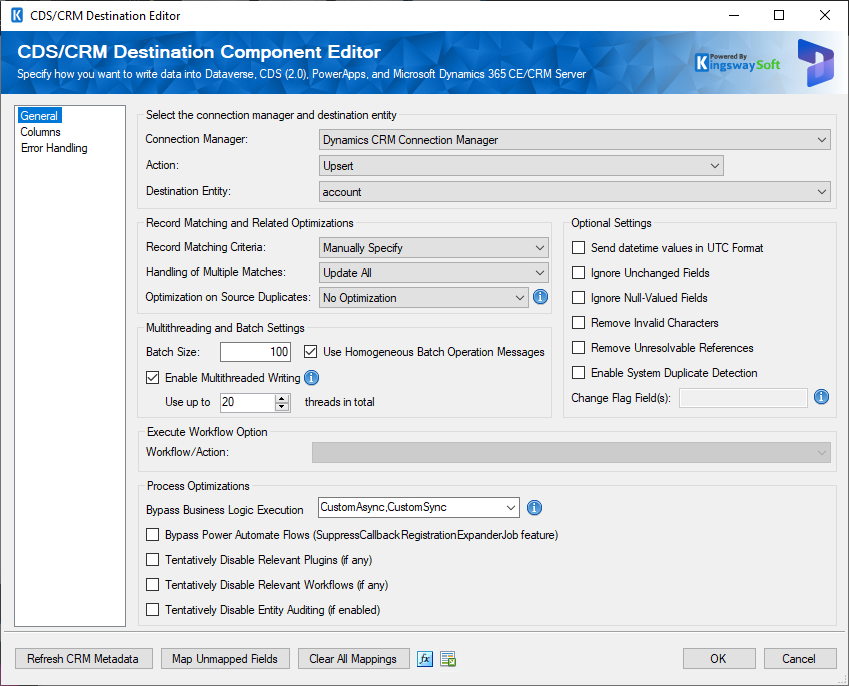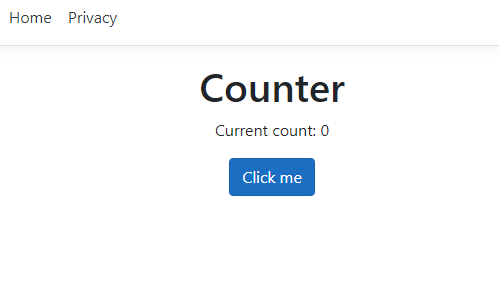- Vmware Update Server
- Vmware 15 Could Not Find Component On Update Server
- Vmware Could Not Find Component Update Server
- Could Not Find Component On Update Server Vmware Player
This article provides a solution to an issue where the client computers don't receive updates when you use a Microsoft Windows Server Update Services (WSUS) SelfUpdate service to send automatic updates.
Original product version: Windows Server 2012 R2
Original KB number: 920659
A vCenter Server Java Components Update wizard opens. Click Patch All. The patch checks whether the Java components and the vCenter Server tc Server components are up to date and silently updates them if necessary. This one is my favorite to use after installing a new system. The /ResetBase switch option also deletes all superseded versions of every component in the component store. A warning if you want to use it on systems in production: All existing service packs and updates cannot be uninstalled after this command is completed. But this option will. Hi, I'm making a server 16+/semi-whitelist, where you have to apply for access to firearms. I want to put in a script that adds slight recoil and removes the reticle. My friend says its a bad idea because people will just download them anyway. Usually, users may come across this type of problems when the Windows Update agent related services stop working, there’s an issue with the update cache, or some components are corrupted. In these situations, you can reset Windows Update on Windows 10 to fix most problems.
This method allows your Component to exit the Update life cycle if there is no reason to apply a new render. Out of the box, the shouldComponentUpdate is a no-op that returns true. This means every time we start an Update in a Component, we will re-render. If you recall, React does not.
Symptoms
When you try to use the WSUS SelfUpdate service to send automatic updates to client computers, the client computers do not receive the updates. Additionally, the client computers do not report to the WSUS server.
When this occurs, the WSUS Administration console logs the following error message:
Check your server configuration. One or more Update Service components could not be contacted. Check your server status and ensure that the Windows Server Update Service is running.
Non-running services: SelfUpdate
The event log may also include the following event:
Cause
This problem may occur if one or more of the following conditions are true:
- The permissions on the
C:Program FilesUpdate ServiceSelfUpdatedirectory are missing or incorrectly configured, or the IUSR_ ComputerName account has been removed from the Users group. - The SelfUpdate virtual directory is missing from the WSUS server.
- The SelfUpdate virtual directory is not configured for the default site on port 80.
- The SelfUpdate virtual directory does not have anonymous access permissions.
- The default Web site is configured to use specified IP addresses and is missing an entry for 127.0.0.1.
- The default Web site does not have anonymous access permissions.
- The WSUS server also has Microsoft Windows SharePoint Services installed. The WSUS resources have not been excluded from SharePoint management.
- The Selfupdate.msi installation was defective. Therefore, files are missing from the ~Selfupdate subfolders.
Resolution
To resolve this problem, you must have the following minimum permissions on the C:Program FilesUpdate ServiceSelfUpdate directory.
| Group | Permissions |
|---|---|
| Administrators | Full Control |
| System | Full Control |
| Domain/Users or Local/Users | Read&Execute, Read, List Folders |
| IUSR_ ComputerName | Read&Execute, Read, List Folders |
Note
IUSR_ ComputerName represents the host name of the server that is running IIS where WSUS is installed. If this account is a member of the Users group, you do not have to explicitly define these permissions.
To resolve a problem where the SelfUpdate virtual directory is missing or there is no SelfUpdate virtual directory listed under the Web site that is bound to port 80, run the Selfupdate.msi file that is located in the Program filesUpdate servicesSetup folder.
To resolve issues where the SelfUpdate virtual directory does not have anonymous access permissions, open IIS Manager, expand the default Web site, right-click the SelfUpdate virtual directory, and then click Properties. On the Directory Security tab, click edit under Authentication and access control. Make sure that anonymous access is enabled.
Note
This step should be performed for the default Web site as well. The SelfUpdate tree does not work if you have a Web site that is bound to a specific IP address in your IIS configuration. The workaround is either to set your IIS configuration to respond to 'All unassigned' addresses or to add 127.0.0.1 to the list of IP addresses used for SelfUpdate.
Use Internet Information Services (IIS) Management console to verify that the server is set up with one of the following two configurations.
Configuration 1: WSUS is installed on the default Web site
Configure the default Web site by using the following settings:
- SelfUpdate
- Content
- ClientWebService
- SimpleAuthWebService
- WSUSAdmin
- ReportingWebService
- DssAuthWebService
- ServerSyncWebService
Configuration 2: WSUS is installed on a custom Web site
Configure the default Web site on port 80 by using the following settings:
- SelfUpdate
- ClientWebService
Configure WSUS Administration on port 8530 with the following settings:
- SelfUpdate
- Content
- ClientWebService
- SimpleAuthWebService
- WSUSAdmin
- ReportingWebService
- DssAuthWebService
- ServerSyncWebService
Regardless of the configuration that you select, you must also verify the following settings:
- You must configure the SelfUpdate virtual directory under the default Web site or any other Web site to listen on Port 80.
- The SelfUpdate virtual directory points to C:Program FilesUpdate ServiceSelfUpdate.
- The WSUSAdmin virtual directory is the only virtual directory in IIS that should have security set to Integrated Windows Authentication. Set all other virtual directories security to Anonymous Access Enabled.
Status

Microsoft has confirmed that this is a problem.
More information

When you use IIS, you can move the SelfUpdate directory to a different Web site. To do this, follow these steps:
- Click Start, click Run, type Control admintools, and then double-click Internet Information Services (IIS) Manager.
- Expand the Web Sites folder, and then click the WSUS Administration node.
- Right-click the SelfUpdate node, point to All Tasks, and then click Save Configuration to File.
- Type a name for the file and then save the file to another folder. You will use this file in steps 9 through 12.
- Right-click the ClientWebService node, select All Tasks, and then click Save Configuration to File.
- Type a name for the file and save the file to the same folder that you used in step 4. You will use this file in steps 13 through 15.
- Select the default Web site or another Web site that is running on port 80.
- Right-click the Web site, point to New, and then click Virtual Directory (from file).
- Select the directory where you saved the SelfUpdate and the ClientWebService.xml files in steps 4 and 6.
- Select the SelfUpdate.xml file, and then click Open.
- Click Read File, click the SelfUpdate file that is now listed under Select a configuration to import, and then click OK.
- In the IIS Manager dialog box, type the name for a new virtual directory in the Alias box, and then click OK.
- Select the ClientWebService.xml file, and then click Open.
- Click Read File, click the SelfUpdate file that is now listed under Select a configuration to import, and then click OK.
- In the IIS Manager dialog box, type the name for a new virtual directory in the Alias box, and then click OK.
- If this is a new Web site, start the Web site from IIS Manager. If this is an existing Web site, restart the Web site from IIS Manager.
References

Vmware Update Server
For more information about automatic updates in Windows, see Description of the Automatic Updates feature in Windows.

A running instance of Acrobat has caused an error
In Acrobat, trying to use a tool or feature results in one of the following errors:
'A running instance of Acrobat has caused an error.'
Vmware 15 Could Not Find Component On Update Server

Reason: The error occurs when an already launched instance of Acrobat is busy or in a hang state and you try to perform some operation from outside Acrobat, for example, opening a PDF file by double-clicking.
To resolve the problem, try the following solutions in the order they appear below.
Solution 1: Quit Acrobat and kill the previously running Acrobat
Do one of the following to open the Task Manager:
- Right-click Windows Taskbar and then click Task Manager.
- Press Ctrl+Alt+Delete keys together and then click Task Manager.
Right-click Adobe Acrobat and then click End Task.
Close Task Manager.
Relaunch Acrobat and see whether the problem is resolved. If not, try the next solution.
Open the Windows Registry Editor:
- Click Start > Run.
- Type Regedit in the Open field and then click OK.
Navigate to the following registry key:
HKEY_CLASSES_ROOTacrobatshellopenddeexecapplicationTake a backup: Right-click the Application key and then click Export. In the Export Registry File dialog box, enter a file name and click Save.
Change the value of the key from AcroViewA20 to AcroViewR20 (where the last two digits or numbers depend on the Acrobat version installed on your computer; For example, for Acrobat 2020, it will be 20):
- Double-click the Default under Name. The Edit String dialog box is displayed.
- In the Value data field, change the value to AcroViewR20 and then click OK.
Close the Registry Editor by clicking the Closeicon (X) at the upper-right corner of the dialog box.
Relaunch Acrobat and see whether the problem is resolved. If not, try the next solution.
Vmware Could Not Find Component Update Server
Solution 3: Update Acrobat to the latest version
- To automatically update from Acrobat, choose Help > Check for updates. Follow the steps in the Updater window to download and install the latest updates.
Relaunch Acrobat and see whether the problem is resolved. If not, try the next solution.
Acrobat or the resources it depends upon could be damaged. Try repairing Acrobat as follows:
Could Not Find Component On Update Server Vmware Player
- Run repair from within Acrobat: Choose Help > Repair Installation.
Check whether an Anti-virus program is installed on the machine.
If yes, disable the program. Check whether the problem is resolved.
If the problem is resolved, report the problem to the corresponding vendor.